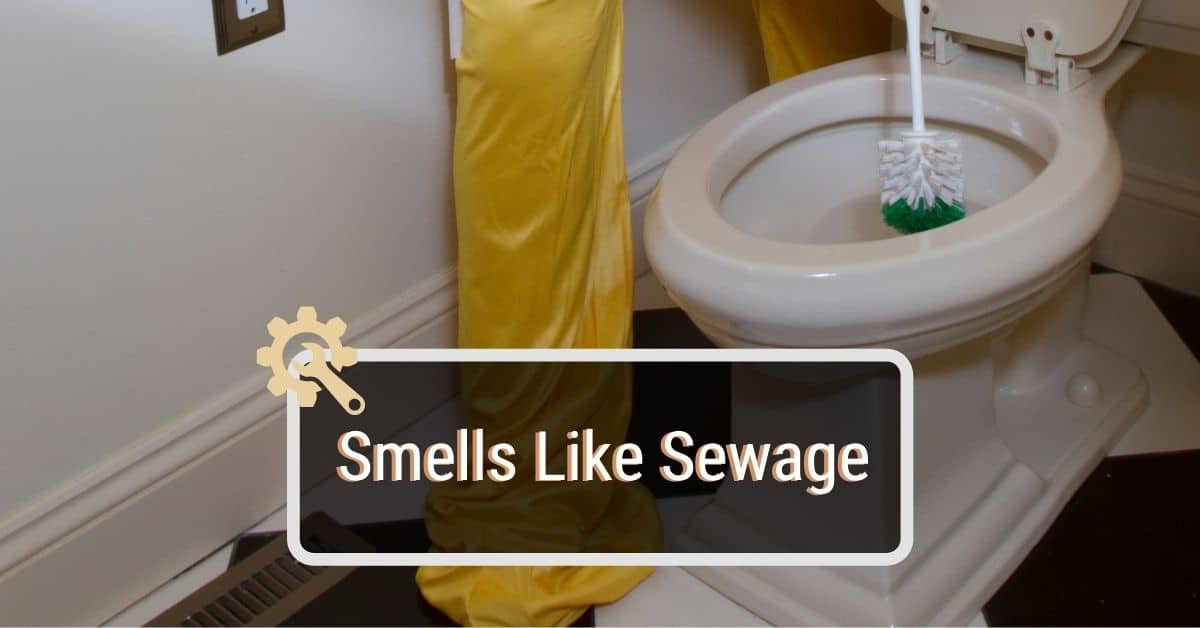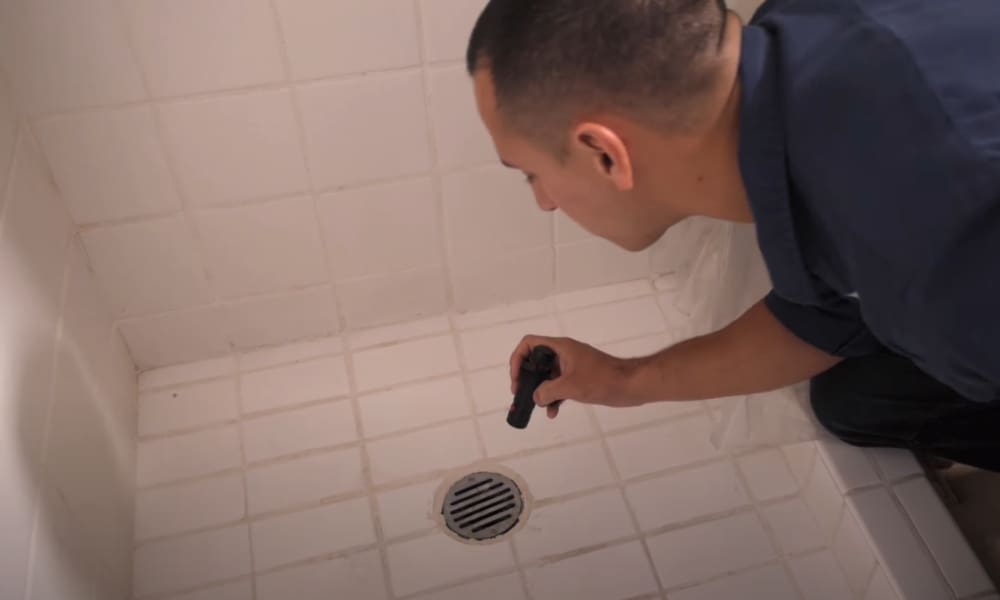Understanding the Source of the Sewer Smell: Bathroom Shower Smells Like Sewer

A sewer smell in your bathroom can be a real nuisance, making your home feel unpleasant and raising concerns about potential health hazards. Identifying the source of the odor is the first step towards eliminating it. The smell can originate from various places in your plumbing system, each requiring a different approach to fix.
Drain Traps
Drain traps are U-shaped pipes found beneath sinks, tubs, and showers. They serve as a barrier, holding a small amount of water that prevents sewer gases from entering your home. A dry drain trap can allow these gases to escape, resulting in the unpleasant sewer smell. This happens when the water in the trap evaporates, often due to infrequent use or a leak in the trap.
Vent Pipes
Vent pipes connect your plumbing system to the outside air, allowing sewer gases to escape safely. If a vent pipe becomes blocked, the pressure within the plumbing system can increase, forcing sewer gases to find other ways out, such as through your bathroom drain. This blockage can occur due to debris, bird nests, or even ice buildup in cold climates.
Plumbing Fixtures
Sometimes, the source of the sewer smell might be a faulty plumbing fixture itself. A cracked or leaking pipe in your bathroom can allow sewer gases to escape into the room. This can be particularly problematic with older plumbing systems where pipes might have corroded over time.
Sewage Line Issues
The most serious cause of a sewer smell in your bathroom is a problem with the main sewage line. This could involve a crack or break in the line, a blockage, or a root intrusion. These issues can lead to a significant buildup of pressure within the sewage system, forcing sewer gases to escape through your bathroom drain.
Troubleshooting and Inspection

Locating the source of a sewer smell in your bathroom shower can be a challenging task. However, with a methodical approach and a keen eye for detail, you can systematically investigate potential culprits and pinpoint the exact location of the problem. This section will guide you through a comprehensive inspection process, equipping you with the knowledge and tools to effectively troubleshoot and identify the root cause of the odor.
Inspecting the Shower and Surroundings
Before diving into the intricacies of plumbing, it’s essential to visually inspect the shower area and its surroundings for any signs of a sewer leak or blockage. This initial observation can provide valuable clues and help narrow down your investigation.
- Check for visible water damage: Look for signs of water damage around the shower, such as discolored grout, peeling paint, or warped floorboards. These indicators suggest potential leaks that could be contributing to the sewer smell.
- Examine the shower drain: Carefully inspect the shower drain for any visible blockages, such as hair, soap scum, or debris. A clogged drain can trap water and create an environment conducive to bacterial growth, leading to unpleasant odors.
- Investigate the showerhead: Examine the showerhead for any signs of leaks or drips. A leaky showerhead can contribute to a damp environment, promoting the growth of mold and mildew, which can also produce unpleasant smells.
- Assess the surrounding area: Look for any signs of water damage or leaks in the surrounding area, including the bathroom floor, walls, and ceiling. These observations can help you identify potential sources of the sewer smell.
Checking Drain Traps
Drain traps are essential components of plumbing systems, designed to prevent sewer gases from entering your home. These traps contain a small amount of water that acts as a barrier, preventing the passage of odors.
- Locate the drain trap: The drain trap is typically located under the shower drain, and it’s usually a curved pipe with a U-shaped bend.
- Check for water level: Inspect the drain trap to ensure that it contains a sufficient amount of water. A low water level or a completely dry trap can allow sewer gases to escape.
- Examine for blockages: Carefully inspect the drain trap for any signs of blockages, such as hair, soap scum, or debris. A clogged drain trap can prevent proper drainage and contribute to sewer odors.
Inspecting Vent Pipes
Vent pipes play a crucial role in maintaining proper air circulation within your plumbing system, preventing sewer gases from accumulating and creating unpleasant odors.
- Locate the vent pipe: The vent pipe is typically located on the roof of your home, and it connects to the sewer system.
- Check for blockages: Inspect the vent pipe for any signs of blockages, such as debris, bird nests, or ice buildup. A blocked vent pipe can restrict airflow, leading to sewer gas buildup and unpleasant odors.
- Examine for damage: Carefully inspect the vent pipe for any signs of damage, such as cracks, holes, or corrosion. Damaged vent pipes can allow sewer gases to escape into your home.
Checking Plumbing Fixtures, Bathroom shower smells like sewer
Plumbing fixtures, such as toilets, sinks, and tubs, can also be sources of sewer smells if they are not functioning properly.
- Inspect for leaks: Carefully check all plumbing fixtures for any signs of leaks or drips. Leaky fixtures can create damp environments that promote the growth of mold and mildew, which can produce unpleasant odors.
- Examine for blockages: Inspect the drains of all plumbing fixtures for any signs of blockages, such as hair, soap scum, or debris. A clogged drain can trap water and create an environment conducive to bacterial growth, leading to unpleasant odors.
Solutions and Remediation

Now that you’ve pinpointed the source of the sewer smell, it’s time to tackle the problem head-on. The solutions you choose will depend on the root cause. This section Artikels various approaches to eliminate the stench and restore your bathroom to a fresh, clean space.
Addressing Leaks and Drainage Issues
Leaks and improper drainage can lead to sewer gas escaping into your bathroom. Here’s how to address these problems:
- Repairing Leaks: Leaks in your shower drain, pipes, or plumbing fixtures allow sewer gas to seep through. Identify the source of the leak and contact a licensed plumber for repair. This might involve replacing damaged pipes, sealing cracks, or tightening connections.
- Clearing Blockages: A clogged drain can trap water and create a breeding ground for bacteria, producing foul odors. Use a plunger or drain snake to clear the blockage. For stubborn clogs, consider a chemical drain cleaner, but use it cautiously and follow the manufacturer’s instructions.
- Vent Inspection and Repair: Your bathroom’s vent pipe allows sewer gases to escape to the roof, preventing them from entering your home. If the vent is clogged or damaged, it can lead to sewer smells. Inspect the vent pipe for blockages, corrosion, or damage. If necessary, contact a plumber for repairs or replacement.
Sealing Gaps and Cracks
Even small gaps or cracks in your bathroom can allow sewer gas to enter. Here’s how to seal them:
- Caulking and Sealing: Apply a high-quality sealant around the base of your shower, along the walls, and around any plumbing fixtures. This creates a barrier against sewer gas infiltration.
- Inspecting and Repairing Floor Tiles: Cracked or broken floor tiles can create openings for sewer gas. Replace damaged tiles and ensure proper grouting to prevent gas from escaping.
Ventilation and Air Circulation
Proper ventilation is crucial for removing moisture and odors from your bathroom. Here are some strategies:
- Using a Bathroom Fan: A bathroom fan exhausts moisture and odors, preventing them from accumulating. Ensure the fan is working properly and runs for a sufficient time after showering.
- Opening a Window: Opening a window after showering can help circulate fresh air and reduce moisture, minimizing the risk of sewer smells.
Addressing P-Traps
P-traps are U-shaped sections of pipe that hold water to prevent sewer gas from entering your bathroom. Here’s how to ensure they’re working correctly:
- Checking for Water: Inspect the P-trap to ensure it holds water. If the water has evaporated, it can allow sewer gas to pass through. Pour water into the drain to refill the P-trap.
- Cleaning the P-Trap: If the P-trap is clogged or dirty, it can trap water and create a breeding ground for bacteria, leading to odors. Clean the P-trap regularly to prevent this.
Professional Assistance
In some cases, the sewer smell may be caused by complex plumbing issues or damage that requires professional expertise.
- Plumbing Inspection: Contact a licensed plumber to conduct a thorough inspection of your plumbing system. They can identify the root cause of the smell and recommend appropriate solutions.
- Sewer Line Inspection: If the smell is persistent or accompanied by other issues like slow drainage, the problem might be in your sewer line. A professional plumber can use a camera to inspect the sewer line and identify any blockages, cracks, or root intrusion.
Table of Solutions and Their Pros and Cons
| Solution | Pros | Cons |
|---|---|---|
| Repairing Leaks | Addresses the root cause of the smell, preventing future problems. | Can be expensive, especially if extensive repairs are needed. |
| Clearing Blockages | Often a quick and inexpensive solution. | May not address the underlying cause of the blockage, which could reoccur. |
| Vent Inspection and Repair | Ensures proper ventilation, preventing sewer gas from entering the home. | Can be costly if the vent needs replacement. |
| Caulking and Sealing | Creates a barrier against sewer gas infiltration, often a simple and affordable solution. | May not be effective if the problem is caused by a leak or drainage issue. |
| Using a Bathroom Fan | Helps remove moisture and odors, reducing the risk of sewer smells. | May not be effective if the problem is caused by a leak or drainage issue. |
| Checking and Cleaning P-Traps | Simple and inexpensive way to prevent sewer gas from entering the bathroom. | May not be effective if the problem is caused by a leak or drainage issue. |
| Professional Plumbing Inspection | Provides a comprehensive assessment of your plumbing system, identifying the root cause of the smell. | Can be expensive, but may be necessary for complex plumbing issues. |
| Sewer Line Inspection | Identifies any blockages, cracks, or root intrusion in your sewer line. | Can be expensive, but may be necessary if the problem is in the sewer line. |
Bathroom shower smells like sewer – A bathroom shower that smells like sewer is a common problem, often caused by a faulty drain or vent. While addressing the root cause is essential, a best bathroom air neutralizer can help mask the odor in the meantime.
These devices use activated carbon or other odor-absorbing materials to neutralize unpleasant smells, providing a more pleasant bathroom experience until the underlying issue is resolved.
A bathroom shower that smells like sewer is a common problem, often caused by a buildup of mildew and bacteria. While harsh chemicals can be effective, they can also irritate sensitive skin and release harmful fumes. Instead, consider using a best natural bathroom deodorizer to eliminate odors and create a fresh, clean environment.
These natural solutions are often made with essential oils and plant-based ingredients, providing a safer and more sustainable way to combat those unpleasant bathroom smells.